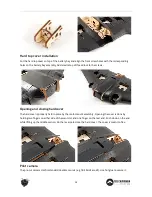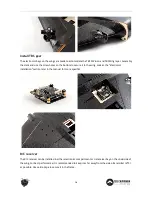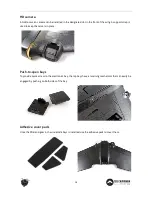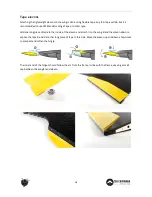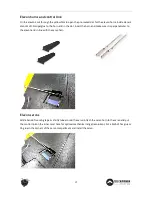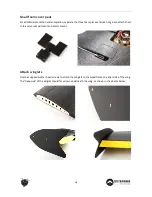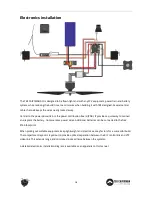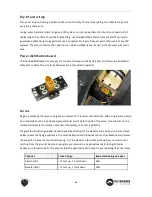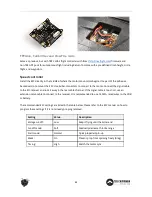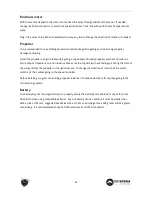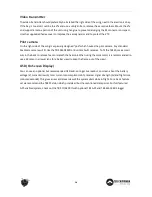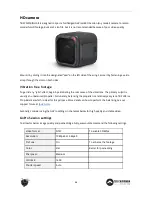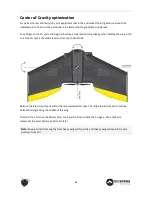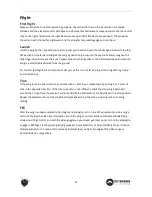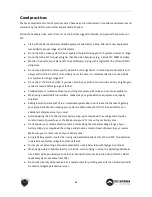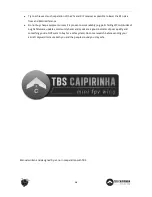
Flight
First flight
Make sure that the controls are working properly. Check that the trim on the transmitter is centered
(zeroed). Pull the elevator control stick back and observe that both elevons move upward. Push the control
stick to the right and observe the right elevon moves up and the left elevon moves down. The propeller
should turn with the text facing forward and the straight sharp leading-edge cut into the air.
Launch
Hold the wing by the nose with your palm up over your head and your thumb wrapped around to the top.
Take a step or two forward and give the wing a good strong throw into the wind. A follow through with a
little finger tip will increase the launch speed. Move the throttle stick to the full forward position when the
wing is a comfortable distance from the ground.
For the first few flights ask someone to assist you, as this is a crucial step to get the wing off the ground
and trimmed out.
Trim
If the wing turns in either direction or pitches with no stick input, compensate by adding 2 or 3 clicks of
trim in the opposite direction. If the trim correction is not sufficient, check that the wing is balanced
around the CG spot (see the previous section) and that the both elevons are flush/level in neutral position.
Repeat the adjustments until the wing flies straight ahead in a glide with a slow sink rate to a sliding
landing.
FPV
After the wing has been adjusted to fly straight and properly, turn on the FPV equipment and do a range
test to verify that the video link is reliable. Launch the wing as normal, attain reasonable altitude flying
while Line-Of-Sight (LOS), and with the video goggles on your head, put them on (or turn to the display) to
engage in FPV flight. If the picture gradually weakens (noise blends in) or video suddenly drops, increase
altitude and return to home, as this normally indicates that you fly at the edge of the video range or
behind obstacles, respectively.
27
Содержание CAIPIRINHA II
Страница 9: ...Underside of the wing assembly 9 ...

